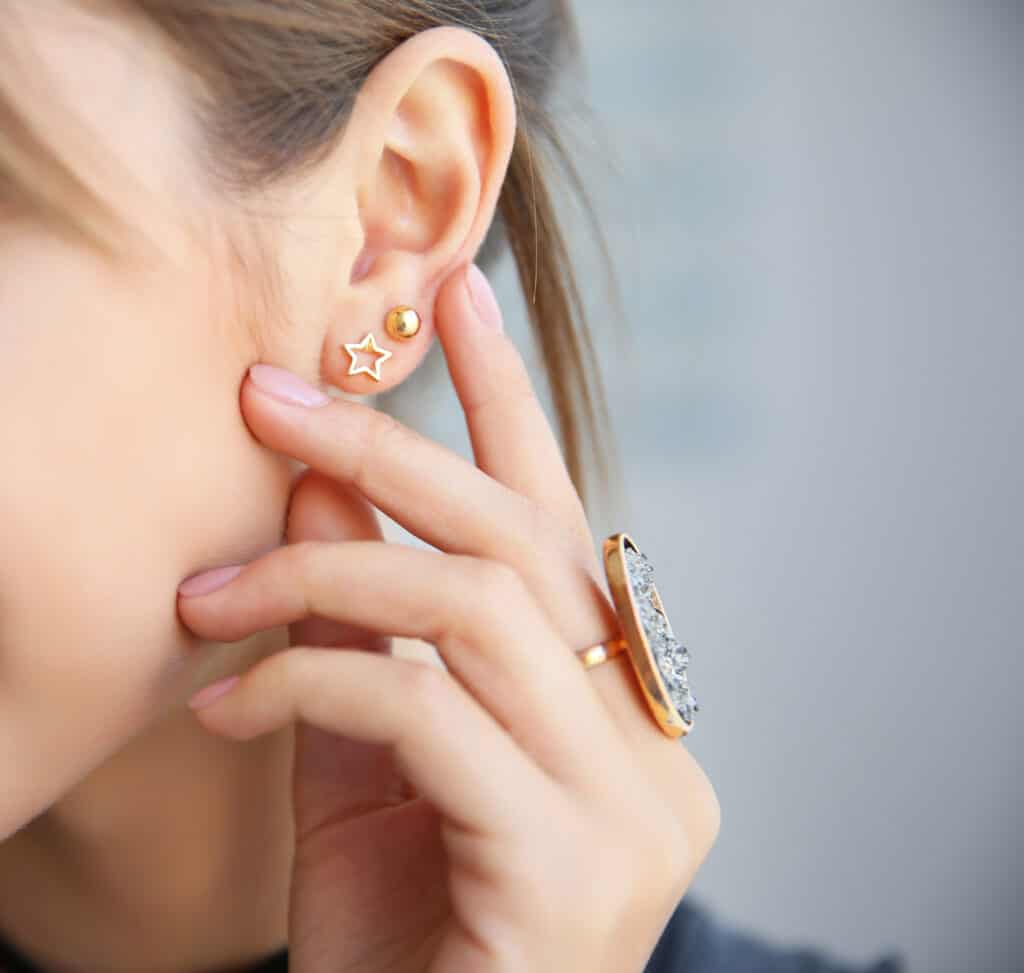In the tapestry of human history, ear piercing has held various meanings, from symbols of status and beauty to rites of passage. Across civilizations and epochs, adorned ears have told stories of identity, tradition, and self-expression. In contemporary society, ear piercings have found a harmonious balance between time-honored rituals and modern trendsetting. The evolution of styles and techniques continues, with aesthetically diverse and creative forms flourishing. Individuals embarking on their ear piercing journey today face a wealth of choices, from the placement and style of the piercing to the selection of a jeweler, with the latter aspect vital in finding trusted ear piercing services for various styles. A successful experience is not simply shaped by the decision of where and how to pierce but equally by the aftercare that follows—integral for the longevity and health of the piercing.
Types of Ear Piercings
Ear piercings are classified not just by their location on the ear but by the puncture technique and the jewelry they accommodate. Classic lobe piercings remain the most common type, but many are venturing into more intriguing styles, such as the tragus or rook piercings. Some opt for a single statement piercing, while others curate an intricate constellation of studs and rings along the ear’s cartilage, known as an ‘ear project.” These trends are not stationary; they evolve, with social media spotlighting new variations and reviving vintage fashions. Whether one chooses a minimalist approach with a single elegant stud or a bolder expression through a scaffold piercing, the choice reflects personal taste and, often, a deeper narrative of individuality.
Choosing the Right Piercing Professional
Trust is a fundamental aspect of having someone pierce your body. Trusted ear piercing services for a variety of styles with technical understanding, substantial experience, and good communication skills can transform a piercing session from a nerve-wracking procedure to an empowering encounter. It’s not simply about piercing but the comprehensive experience encompassing assessment, execution, and aftercare guidance. To ensure they enter a competent and sanitary environment, one must diligently research and observe client testimonials, studio cleanliness, and state-level certifications. The choice of the piercing artist and studio plays a pivotal role in the piercing’s success and overall contentment with the process.
Ear Piercing Techniques
Contemplating the piercing method is a decision that merits attention. The debate between using a needle and a piercing gun concerns safety and precision. Needle piercing is often lauded for its sterility and the piercer’s ability to control the angle and depth of the piercing, which is crucial for intricate types of piercings and dense cartilage. On the other hand, piercing guns, while famous for their speed and minimal discomfort, are controversial due to potential risks such as blunt force trauma to the ear and difficulty in sterilizing the equipment. Understanding both methods allows individuals to make informed decisions and discuss their preferences with their chosen professional service provider.
Post-Piercing Care
Meticulous aftercare is just as vital as the piercing process itself. Adhering to a cleaning regime using a saline solution twice daily and avoiding the temptation to touch or rotate the jewelry are cornerstone practices that foster optimal healing. It’s also prudent to be vigilant for signs of infection—promptly recognizing and responding to unusual pain, discharge, or redness can forestall complications. The healing period varies with each piercing type, and while the lobe may heal within weeks, cartilage piercings can take months. Therefore, patience and persistence in aftercare routines are indispensable and can be the difference between a delightful piercing and a distressing one.
Ear Piercing for Different Age Groups
Regarding ear piercing, age is more than a number; it reflects differing responsibilities, aftercare capabilities, and style preferences. Parents may contemplate ear piercing for their children, considering factors like the child’s desire, pain management, and aftercare responsibility. Teenagers often view piercings as a means of self-expression, and while they might have greater autonomy in making decisions, parental guidance on aftercare practices is still invaluable. Adults entering the piercing scene, possibly desiring to rejuvenate or redefine their image, should measure the commitment needed for healing and upkeep. Regardless of age, the decision to undergo ear piercing necessitates a preparedness to adhere to aftercare routines and the maturity to manage any possible complications.
Conclusion
Embarking on the ear-piercing journey is an ancient practice reinterpreted through modern eyes, a mingling of aesthetic pleasure and personal expression. Armed with understanding, from choosing the perfect location and style to healing and handling aftercare challenges, those wishing to pierce their ears can do so with confidence and peace of mind. The landscape of ear piercing constantly evolves, yet at its core, it remains the constant of artistry, care, and individuality. As you reflect on your inner self through your choice of piercings, remember that the path to a successful and satisfying piercing is paved with knowledge, responsibility, and respect for the craft and your well-being.





